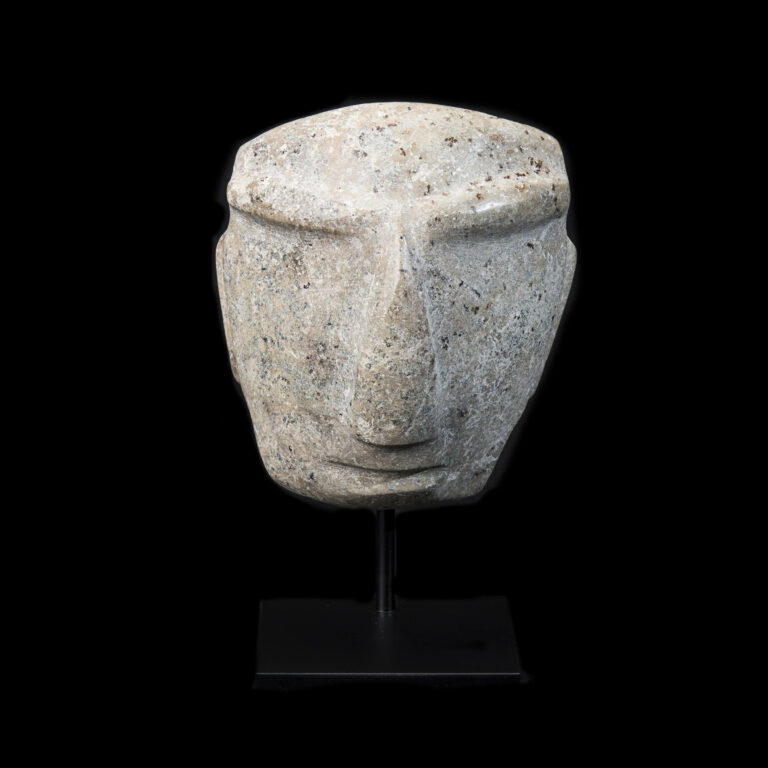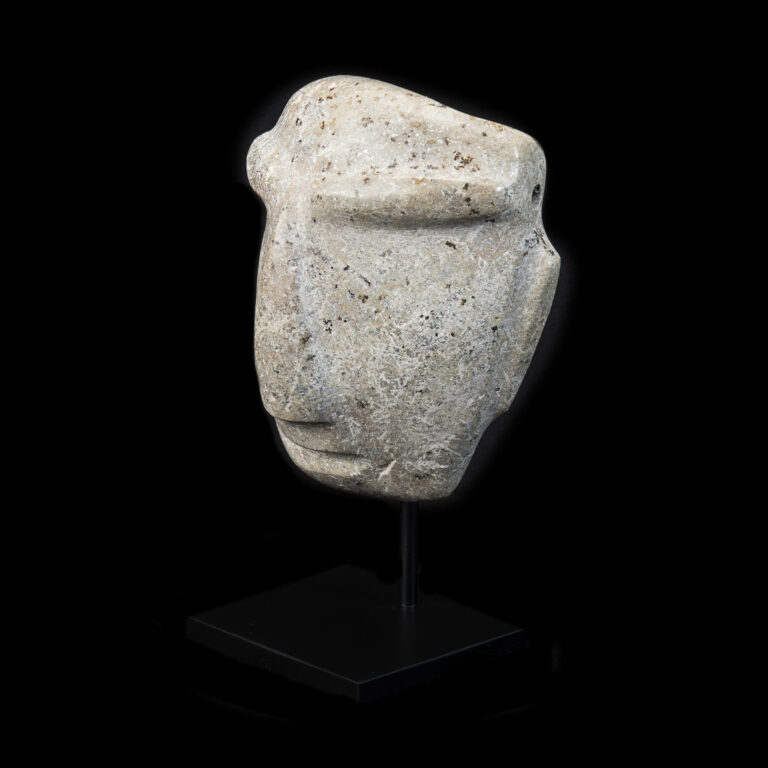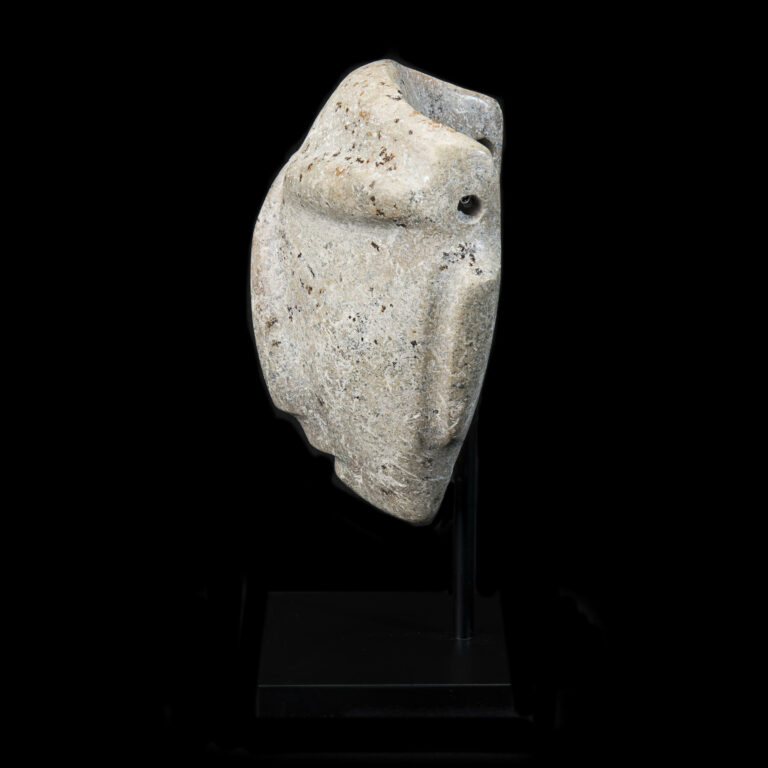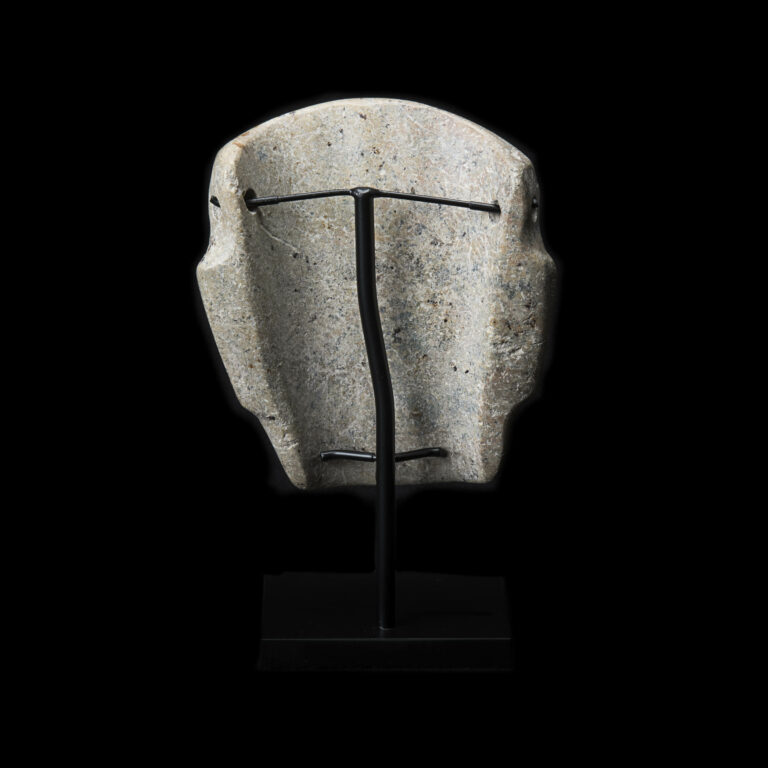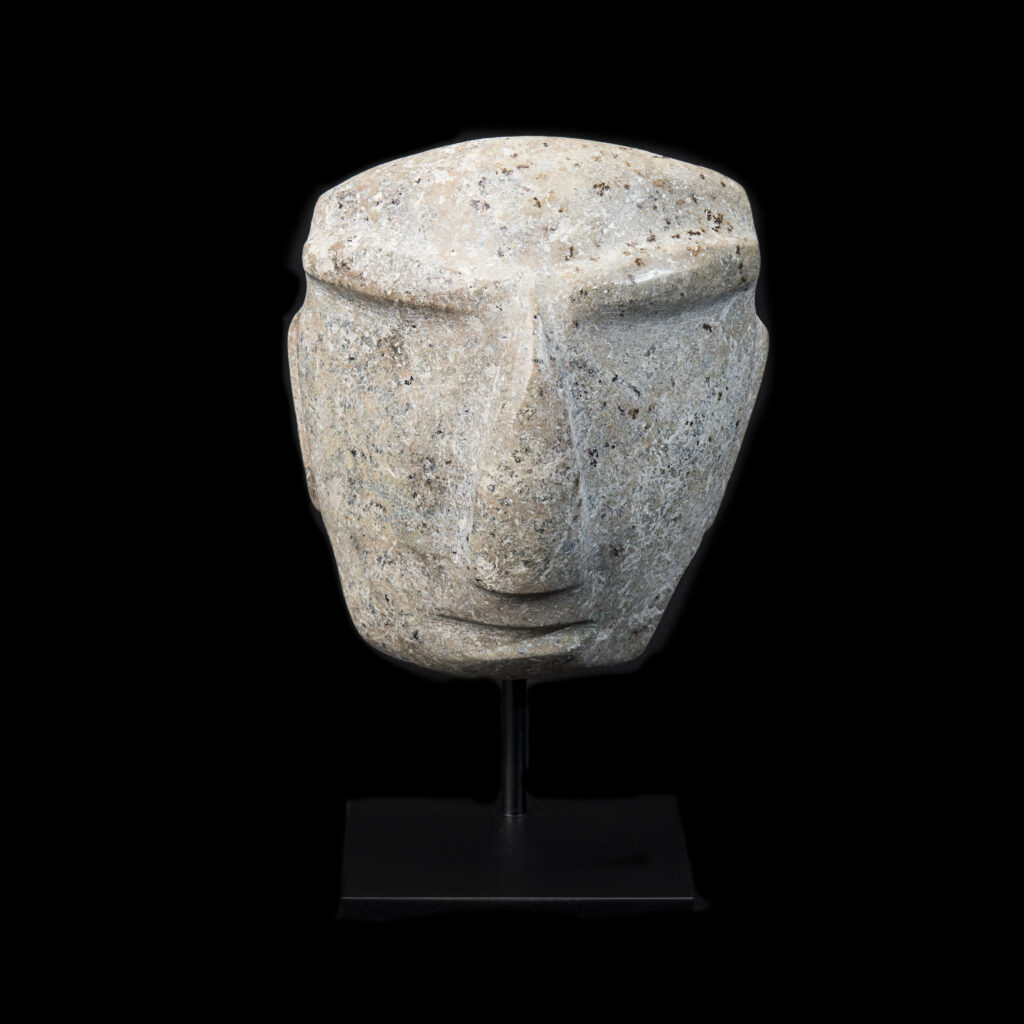
CHONTAL FACE-PANEL, GUERRERO AREA, MEXICO, 300 BC – 300 AD
In 1946 ethnologist Miguel Covarrubias (1904-1957), who studied ancient stone sculptures from Guerrero, a state in southwestern Mexico, noted to the Mexican Society of Antropology, that besides the two major preclassic cultures, the Olmec and the Teotihuacan, there are another three distinct local traditions to be distinguished in the area; the Ultepec, the Chontal and the well studied Mezcala culture.
As we look to the Mezcala culture, which is believed to be developed during the third and second millennia BC and to have continued into the Classic Period (250-650 AD), it is only toward the latter part of their tradition that there is some degree of stylistic affinity with the lithic tradition of the Chontal people.
Both were known to make stone human figures and face panels, like this one, and while it is sometimes very difficult to distinguish them from another, it is a fact that the Mezcala objects tended more towards abstraction, while the Chontal desired more naturalism in their figures and panels.
This face-panel, with the elongated face and longer nose, is stylistically viewed typical for the Chontal style. It is still possible the mask is Mezcala, as it is known that these characteristics were derived by them from their neighbours. It is pretty sure to say though that this is a Chontal panel, as Mezcala masks or face-panels are often smaller than this one and their backside is almost always flat or slightly convex, while the Chontal panels are hollowed out, as we can see in this object.
There is not a lot known about the purpose of these face-panels in the Chontal culture. We do know that the Mezcala probably used similar panels as grave furnishing, depicting the deceased, of spirits of the nether world in which the departed were assumed to be reborn.
MEDIUM
Stone
SIZE
13cm high – 11,5cm wide
PROVENANCE
ex.private coll. Germany
PRICE
€ 8.500
Expertly mounted
All dimensions are without the mounting

